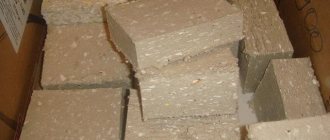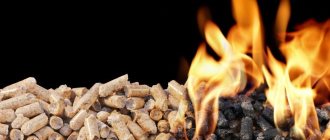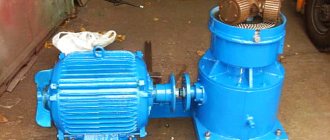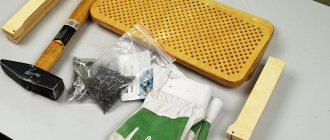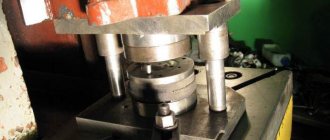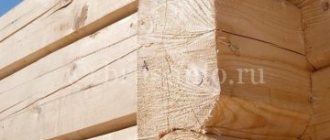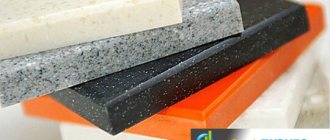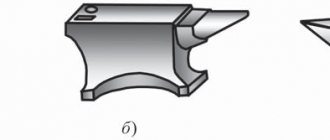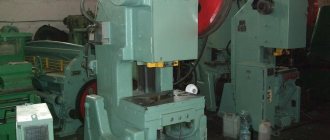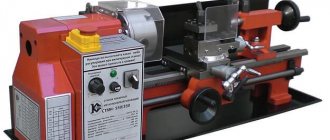The world is slowly but surely moving towards zero-waste production. Today it is obvious that such a valuable resource as straw cannot be underestimated from an energy point of view. Moreover, such “simple” disposal methods as burning old grass in the fields, which in fact only harms the soil, should remain a thing of the past.
Straw has long been used as a promising raw material for pellets. The advantage of this type of raw material is that it is very cheap or free for agricultural enterprises, and its energy value is not inferior to wood. Purchasing equipment for the production of straw pellets can be a profitable investment for large agricultural complexes. Instead of losses from the disposal of dry stalks, you can make a profit from the sale of straw pellets.
Why is straw a promising raw material for pellets, and what equipment is needed for their production?
What and how are pellets made from?
The attractiveness of fuel pellets as fuel for home boilers is primarily due to ease of use. Pellet boilers have a high degree of automation and require much less attention than conventional solid fuel boilers. As for the calorific value, it differs by 20-25% for dry firewood (15% humidity) and pellets (8%), despite the fact that the latter occupy a much smaller volume.
For reference. To achieve a moisture content of 15%, wood must dry under normal conditions for at least 2 years. Then its calorific value will reach 4-4.5 kW/kg, while 1 kg of pellets (wood) releases from 4.5 to 5 kW of heat when burned.
In industrial production, pellets are usually made from the following types of raw materials:
- any wood waste, including sawdust and wood chips;
- cereal straw;
- waste from processing sunflower and buckwheat seeds (husks).
The most common fuel pellets are made from sawdust and other wood waste. Agropellets made from husks and straw are cheaper than wood pellets, but their quality is worse due to the increased ash content. So for home craftsmen, the greatest interest is in making pellets from sawdust.
The technology for industrial production of wood pellets consists of 5 main operations:
- Crushing and grinding. Waste is reduced to uniform particle size using industrial crushers.
- Drying to a moisture content not higher than 10%. There are several types of dryers, but they have one thing in common: to evaporate moisture from wood, you need to expend thermal energy.
- Steam processing of raw materials for better molding of granules. Humidity increases slightly.
- Pressing sawdust into pellets using a special press - granulator under a pressure of about 300 bar.
- Cooling and packaging of finished products.
In factory settings where high-performance equipment is needed, a pellet press with a cylindrical matrix is most often used. It is a perforated ring made of thick sheet metal, on the inner surface of which several rollers run. The raw materials are fed to them using a screw, after which the sawdust is pressed by rollers into the holes of the matrix. The “sausages” coming out from the outside are cut to size with a special knife.
There is also a flat type of matrix used in granulators for pellets with lower productivity. This is a sheet of metal at least 20 mm thick, round in shape, with many holes. In such a sawdust press, the rollers are located on top and press the raw materials coming from the hopper through the holes of the matrix. Such machines can be small in size, and therefore are well suited for making pellets at home with your own hands.
For reference. The adhesive that binds the sawdust together in the press is lignin. It is released from small particles of wood when exposed to high pressure.
Types of fuel pellets (wood pellets), production technology
Before building a house or cottage, you need to think through everything carefully - where to lay the wiring, what kind of heating system to make. Often, this causes problems: the gas main may be located far from the house and it is useless to look for exits to it, and installing an electric boiler at home is unprofitable or inconvenient.
In Russia, this heating fuel option is recognized as environmentally friendly. Granules are a good substitute for firewood and coal, and do not require preparation in separate rooms (sheds), as well as delivery, which is not free. Only natural gas competes with pellets . But as you know, gas is more expensive than pellets.
During the heating season, all types of fuel become extremely popular. But thanks to their price and heat supply similar to firewood, pellets will be an advantageous offer on the market for any person.
These granules are already used in industry in Europe, as it is cost-effective and price-effective compared to the use of other heating materials. But pellets have not yet become so widely known for household use, especially in Russia.
Pellet classification
According to their grade, pellets are divided into 3 types:
- Industrial pellets. Gray-brown granules. They contain approximately 0.7 mass fraction of ash due to the fact that the wood, which is the material for the production of this type of pellets, has not been debarked. In other words, these wood pellets contain a large amount of bark. Due to the high bark content, not all boilers can operate with such fuel, this leads to their breakdown. But their advantage is their cost: industrial pellets cost less than top quality pellets by about half the amount. And if a person has a boiler that can cope with this type of granules, then you can use them without any problems. However, thanks to this fuel, the boiler will be cleaned more often.
- Agropellets. The color of this fuel varies from gray to dark gray. The color depends on the material from which the pellets are made. You can often find sawdust pellets. This type is usually obtained from agricultural waste, such as straw, hay, leaves and others. Therefore, sometimes this kind of fuel is called straw pellets or leaf pellets. This type of fuel is the cheapest, since combustion produces a huge amount of ash, even more than when burning industrial pellets. They are usually used at large thermal power plants; regular cleaning of toxins is required. However, this type of fuel causes a number of problems: the highest ash content and the problem of transportation, which is why agropellets are cheaper than other pellets. During transportation, half of the granules crumble into dust due to their softness. And, as you know, such dust will no longer serve as material for boilers - the boilers will become even more clogged. Therefore, to use this type of fuel, the best option would be to be located close to the place where agropellets are produced.
- White pellets. From the name it is clear that granules of this class are distinguished by their slightly gray, yellowish-white or completely white color. They have their own pleasant smell - the smell of fresh wood. Such pellets are expensive, since their ash content is the lowest and is approximately 0.5%. If you use such fuel for heating, you can forget about cleaning the boiler for the next couple of months. When using them, the equipment will last a long time, and little ash will be released from them.
There is also a separate type of pellets that is not included in this classification:
- Peat pellets - such fuel is characterized by high ash content. This material is environmentally friendly and environmentally friendly. Due to the ash content, these pellets are used only in industry. And most often - in improving fertilizers.
Production process
Pellet production technology is not a long process.
In order not to spend a lot on production, the cheapest wood is chosen for pellets, which will not be needed anywhere else. This could be sawdust, trimmings, wood chips. This waste is sorted and cleaned of any fine dirt - sand, dust, etc. And only after this the process of producing granules begins.
Primary crushing
Wood material is subjected to primary grinding into fractions using special machines. Such machines are called crushers. Division into fractions occurs for a reason - the smaller the size of the fractions, the less energy is needed to dry them.
Drying
After drying, the material is pressed.
There are certain boundaries - the humidity of the fractions should be from 8% to 12%. If the humidity of the raw materials is higher, additional drying is required; if the humidity is lower, you will have to moisten the material.
The drying process itself takes place in belt or drum type machines, which are used depending on the type of raw material that needs to be produced. Typically, belt machines are used in production, since drum dryers pose a danger to humans. In addition, sometimes the material is dried in hot air or water vapor.
Secondary (fine) crushing
If the chips are too large, the future fuel undergoes secondary crushing. The fact is that those granules that are best pressed are those that do not exceed 4 mm in size. Hammer mills are already used in the fine crushing process. They are convenient for crushing fibrous shavings and sawdust, from which future fuel material will later appear.
Water adjustment, pressing
If the raw material has a moisture level of less than 8%, it is usually passed through a special device to increase the humidity.
Equipment for pressing this type of fuel has 2 different matrices - flat and cylindrical. The rollers crush the raw materials on the matrix, thereby pushing the raw materials. After squeezing out, the granules are cut off with a special knife.
When pressing pellets, equipment is subjected to heavy loads, so when purchasing equipment, they look at its strength.
Cooling, packaging
After the pressing stage, the granules have a temperature of 70-90 degrees. To give pellets greater strength and improve their quality, cooling is necessary. Under the influence of the air conditioner located in the equipment, the pellets are cooled. After this, the raw materials are cleaned of excess debris and packaged in bags.
Fuel is packaged using various methods for the convenience of the population. Loose pellets are found in large packages, “big bags” weighing up to 20 kg.
But pellets already packaged in large 10-20 kilogram packs will cost more to the consumer.
Fuel benefits
Unlike other types of fuel, pellets:
- They are environmentally friendly raw materials. This is the main distinguishing characteristic of this type of fuel. When burned, carbon dioxide is released from the granules, which helps reduce the “greenhouse effect” - one of humanity’s global problems.
- Pellets are a waste-free material, and the remaining products after fuel combustion are used in the form of fertilizers.
- Due to the absence of dust and spores, pellets practically do not ignite on their own.
- In terms of the amount of thermal energy released, pellets are not inferior to other types of fuel.
- Convenient transportation and storage of most granules. This fuel does not have a specific smell or taste.
- When using granules, little ash is released. Therefore, the boiler can only be cleaned once a month.
- Wood is inferior to pellets in strength and contains more moisture, because of this, during the combustion process of pellets, more heat is released with the same volume of combustion of both.
In addition, there are so-called heavy granules, for which solid bitumen with high calorific characteristics can be added to the raw material.
Where is it used?
The main purpose of fuel pellets is to ignite and maintain heat. Their applications range from industrial boilers to home fires.
- Granules are used in solid fuel boilers. Combustion is no different from burning coal or wood. In addition, the fuel is also used in home stoves and fireplaces. In the second option, it is recommended to reduce the air supply and replace the standard grate with a grate with smaller holes. It is much easier to burn with pellets than with wood.
- The fuel is used on hikes and picnics. In order not to look for branches to light a fire, you should throw only one load of pellets. This bookmark will last for a long time and the company will be provided with the same heat as from firewood. Buying such raw materials is profitable and more convenient than looking for dry branches in the forest to light a fire.
- Granules as litter for pets. The development of this industry occurred due to the fact that pellets are capable of absorbing not only liquids due to their density and not decomposing, but also unpleasant odors. The granules do not require labor-intensive cleaning and do not cause allergies in both people and four-legged pets.
- Most auto repair shops resort to using pellets for their needs in the form of prevention. They differ little from sawdust and help to easily remove oil stains.
Pellet production technology
The classic manufacturing process looks like this:
- crushing into large parts;
- drying;
- second crushing into small parts;
- mixing and water treatment;
- pressing;
- cooling and drying;
- packaging;
During the first crushing, the wood is crushed for further drying. The crushed raw materials should reach a size of no more than 25 millimeters in length and width, and two millimeters in thickness. This will allow for high-quality and quick drying, as well as dry the materials and prepare them for the second crushing.
As a rule, wet raw materials are stored on a concrete floor to avoid mixing with other particles (sand, stones). The material is fed into the drying machine using a scraper. The operator collects it and feeds it into the drying system.
If the humidity exceeds 15%, it is less susceptible to pressing. In addition, the high humidity of pellets makes them unsuitable for boilers. Therefore, the raw material must be dried before the press to such an extent that its moisture content is eight to twelve percent. The final humidity should be around 10% plus or minus one percent. In all production, drying takes the most energy. To dry one ton of pellets, the combustion heat from one cubic meter of dense wood is required. The best option would be to burn the bark.
A well-chopped product comes out with a size not exceeding one and a half millimeters.
Water treatment is the establishment of the required level of moisture in raw materials. If its humidity does not exceed eight percent, the pellets stick together worse in the press. For this purpose, a dosage of moisture is needed in the mixing container. If hard types of wood are processed, for example, oak or beech, it is necessary to add hot steam.
After the press, pellets come out measuring six millimeters for private buyers and ten millimeters for industrial buyers. The temperature in the press is from seventy to ninety degrees Celsius.
The cooling process ensures the quality of the final result. It is needed to cool the product after pressing. The pellets are then ready for packaging.
Often, pellets are stored in bulk and also transported. But it is possible to provide for packaging in large bags. Private consumers buy granules in twenty kilogram bags.
Equipment set
For a complete set of pellet equipment you must have:
- drum or disk crusher;
- hammer mills;
- gas boiler or sawdust burning boiler;
- drying drum;
- mechanisms for delivering wood to drying;
- smoke exhauster;
- cyclone;
- conveyors;
- movable floor;
- fans;
- mixer;
- press granulator;
- cooling unit;
- sieve;
- finished pellet hopper;
- bag scales;
- packaging machines;
Types of equipment
Equipment comes in the following types:
Mini granulator
Cost from 64 thousand rubles.
Pellet press with electric motor
Cost from 100 thousand rubles.
Diesel engine pellet press
Cost from 89 thousand rubles.
Pellet presses driven by tractor power take-off shaft
Cost from 100 thousand rubles.
Industrial line
Cost from 1.8 million rubles.
Each type has its own characteristics. For example, a device for electric motors has a certain stationarity, while devices with diesel engines are more mobile.
Example of equipment parts for the production of fuel pellets based on an industrial type line:
Such a line costs about 1,800,000 rubles.
Key elements of pellet lines and their approximate prices separately:
- Wood chipper (wood chipper) - about 180,000 rubles.
- Dryer of raw materials for the production of pellets - from 400,000 to 2,500,000 rubles.
- Granulator - from 50,000 to 1,100,000 rubles. Model OGM-1.5 costs about 1,000,000 rubles.
- Pellet cooler - about 400,000 rubles.
Granulators are divided into types relative to the matrix:
- flat die granulator;
- round die granulator;
- hybrid granulator with flat and round matrix;
Flat Die Granulator
A flat die is a flat metal disk that is made of high quality steel. Its diameter is 100-1250 mm, thickness 20-100 mm. The steel used must be wear-resistant and hardened to 60-60 on the Rockwell hardness scale. As a rule, domestically produced steel 40X is used, or HARDOX 500 and 20CRMN steels are used.
The productive capacity of the granulator directly depends on the diameter of the matrix. For example, equipment with a matrix diameter of 1250 millimeters can produce up to 3 tons of granules per hour.
We recommend reading: How much electricity does an air conditioner consume?
The round matrix on granulators reaches a diameter of 550 millimeters. It is made from stainless steel with great wear resistance. Such steel should heat up to a hardness of forty-five to fifty kgf according to Rockwell.
When it comes to productivity, it is necessary to differentiate its value from the high-quality preparation of wood and its components. Also, the power of the electric motor is important for high productivity. Manufacturers, as a rule, install a gearbox on the granulator with torque parameters and a gear ratio with high efficiency, which allows the existing electric motor to be used at optimal power.
Such granulators have long been known in the CIS. They produce compound feed. Their series is DG and OGM. But craftsmen have learned to convert them to make fuel pellets. It is necessary to replace the matrix for the raw materials used and the rolling rollers.
The third version of granulators is almost never used in our territories, but is very common in China. The circular matrix is located parallel to the base. Roll out rollers roll the wood into the granulator using their own weight.
Myths about pellets
MYTH ABOUT PELLETS No. 1
A small 3 kg bag of pellets is enough for a day to heat a high-rise building.
Before pellets become fuel for nuclear fusion, we remind you that this compressed wood produces 5 kWh. In other words, energy engineers understand that 1 kg of pellets is enough to heat a room of 50 m2 for one hour.
MYTH 2: A pellet boiler does not need to be maintained or cleaned.
Even high-quality hardwood pellets have an ash content of 0.5%. This means that when burning a ton of pellets, 5 kg of ash is produced. So the ash bin should still be cleaned. Despite the introduction of self-cleaning systems by some manufacturers, manual cleaning remains the most reliable.
MYTH ABOUT PELLETS No. 3 Pellets can be stored for a long, long, long time
Theoretically, yes. But, like any wood, fuel pellets are hygroscopic, that is, they absorb moisture from the air, which is formed during temperature changes in the form of settling condensate. Such pellets crumble over time, so it is better to store them in a dry, specially designated place.
MYTH ABOUT PELLETS No. 4 Pellets burn better than firewood because “special substances” are added to them, and this is not environmentally friendly.
Pellets are the cleanest solid fuel. “Some in the West” allow additives to be made, but such standards have not become widespread - and such pellets are used on limited equipment for industrial purposes. Gluing is provided by lignin, and good combustion is due to the high density and low moisture content of the pellets.
MYTH ABOUT PELLETS No. 5 Setting up a pellet boiler is very difficult
One can only guess about the origin of such myths. Setting up a pellet boiler from a well-known manufacturer is just a matter of choosing the coolant temperature. All other parameters, such as the amount of air supplied and the required pellet consumption, are selected independently by the boiler automation. Moreover, it does this much more accurately than a human.
MYTH ABOUT PELLETS No. 6 In Russia it is difficult with pellets
That's right, but only if you haven't heard anything about pellets for the last 10 years. Today, wherever there is at least some forest, there will certainly be even a small production of pellets.
MYTH ABOUT PELLETS No. 7 Pellets will soon cease to be produced in our country
Yes, as soon as they stop producing sawdust, they will stop making pellets. That is, after they stop cutting down trees. That is, in 50-100 years. Considering the renewable type of fuel, the number of pellet production plants already built, and their export attractiveness, there are great doubts that this will happen sooner.
Related link: Choosing a solid fuel boiler
Table of consumption of various types of fuel for heating a house with an area of 100 m2 with a ceiling height of 2.8 m
| Fuel | Q fuel, kWh/kg | Efficiency | Consumption per season, t | Monthly consumption, t | Price of 1 ton of fuel, rub. | Cost of 1 kW electric energy, rub. | Price heating per season, rub. | Average heating cost per month, rub. |
| Wood pellets | 4,80 | 0,93 | 3,024 | 0,432 | 6 000 | — | 18 144 | 2 592 |
| Peat pellets | 2,74 | 0,90 | 5,290 | 0,756 | 4 500 | — | 23 805 | 3 401 |
| Diesel fuel | 11,61 | 0,90 | 2,310 | 0,330 | 35 000 | — | 80 850 | 11 550 |
| Gas | 26,00 | 0,90 | 1,034 | 0,148 | 11 200 | — | 11 581 | 1 654 |
| Electricity | — | 0,98 | — | — | — | 3,4 | 63 000 | 9 000 |
Equipment for the production of pellets
The main role in the technological process is played by the machine for the production of pellets, which is also the most difficult to manufacture. It will not be possible to completely make a granulator with your own hands, since to manufacture the matrix and rollers you need metalworking machines - lathe, milling, drilling and grinding. So there are 2 options: buy a ready-made matrix-roller pair or order it from the craftsmen.
Advice. Making a machine for homemade pellets using purchased parts is a risky decision. You will not be able to check the quality of the material and the accuracy of processing, and the matrix can quickly fail. It is better to find the necessary material and give the order to specialists - machine operators.
The matrix pair for the pellet press should be made of high-carbon steel St45 or St50, or even better alloyed with manganese HVG or 65G. Moreover, after processing, the parts must undergo a hardening process in order to achieve a hardness of 58-60 units. To make a matrix for a granulator, you need to maintain all the dimensions indicated in the diagram:
You can use simpler steel for the roller shaft - St3, 10 or 20, and there is no need to harden it. But the working parts of the rolls must be made from the above grades, followed by hardening, and then mounted on the shaft through bearings, as shown in the photo below.
Important. Hardened parts for a pellet press must undergo a grinding process on all working surfaces.
Now let’s talk about what you can use to assemble the housing and drive for a homemade pellet granulator. The matrix pair must be placed inside a cylindrical body, which is made of sheet metal or a pipe with an internal diameter of 200 mm. The drive shaft is inserted into the matrix hole and secured with a key, and below you need to make a platform for the finished pellets. The assembly diagram of the pellet granulator is shown in detail in the video:
Watch this video on YouTube
To rotate the shaft, you need to take an electric motor with a power of at least 5 kW, and the drive can be assembled from an old automobile gearbox from a Volga or Moskvich with part of the rear axle. On the side where the driveshaft is to be connected to the gearbox, a pulley is installed, rotated by a belt drive from an electric motor. Both units are attached to the same frame, as described in the video:
Watch this video on YouTube
Note. In this design of a press for making pellets with your own hands, the shaft rotates the matrix, and the rollers remain stationary. The pulleys must be selected so that its rotation speed is no more than 250 rpm.
Homemade crusher
It’s good when it is possible to obtain good small wood waste from some production for pressing pellets. If this waste contains small branches or slabs, then to grind them you will need additional equipment - a crusher. There are many homemade structures, but most of them cut wood into chips that are too large, from which it is impossible to make pellets at home.
We present to your attention a simple wood waste crusher made from 3 dozen circular saws for a circular saw with carbide tips. All saws are mounted on one shaft in such a way that the teeth of each subsequent one are slightly offset relative to the previous one. A pulley and 2 bearings at the edges are placed on the same shaft, after which the entire structure is fixed to a frame made of angles or pipes.
Note. Here, too, you need a powerful engine so that the saws can “gnaw” branches and other small pieces of wood well.
As you understand, the productivity of the unit is low, but such a wood waste crusher will produce sawdust suitable for the production of pellets. If you have a circular saw on your farm, then the chopper can be adapted to its frame, as is done in the photo:
Sawdust dryer
To ensure that home-made wood pellets do not crumble at the exit from the granulator matrix, it is necessary to ensure the minimum moisture content of the raw materials. In industry, this occurs in various drying chambers. At home, craftsmen have adapted to assembling drum-type sawdust dryers, since their design is the simplest, as shown in the diagram:
Several iron barrels, welded to one another, are mounted on a frame with a slight inclination to one side. Blades are welded from the inside to the walls of the barrels to mix the raw materials. On one side, hot air is supplied inside such an improvised drum using a gas or electric heat gun. The rotation of the drum is carried out by an electric motor through a gearbox or a reduction belt drive.
For reference. When pellets are made from fresh wood waste, the greatest energy consumption occurs in the drying process. For home production, they may be too large, negating all the benefits of this venture.
What raw materials are pellets made from?
There are no special restrictions on the use of raw materials for the production of pellets. The main thing is that they must be of natural origin, plus flammable.
But the raw material has its own requirements:
- Ash content. These are non-combustible residues that remain after burning fuel. For pellets this figure should not exceed 3%.
- Humidity – 8-15%.
- Minimum amount of chemical components such as sulfur, chlorine, nitrogen, etc.
- Freshness of the material, because old raw materials lose their energy value.
- The ability to granulate it. Not all natural combustible materials have low strength. And the stronger the raw material, the weaker the pellets in terms of hardness. Because they are more difficult to press.
Processing of sawdust, cake, husks, seed peels
Unfortunately, waste from the agro-industrial complex does not meet all parameters. They have a high ash content, low energy value, plus a high content of chemical elements. The only plus that outweighs the disadvantages is the minimum price. This reduces the cost of pellets.
Granulated fuel from agricultural plant waste has a fairly good energy value - up to 5 kW/kg. But they have a higher ash content compared to wood - 1.5-3%. Therefore, pellets made from such raw materials belong to the third grade. Hence the low price.
Making pellets from wood, hay and straw
Wood pellets without bark are the first grade. The ash content of such fuel does not exceed 0.5%, the thermal power is 5.4 kW/kg. This is the most expensive option.
Wood with bark belongs to the second grade. This also includes straw and hay pellets. Here the ash content is 1-1.5%, the combustion power is 5.2 kW/kg.
Wood pellet manufacturing technology
The manufacturing method is simple. Includes several technological operations:
- Sorting wood by size: into sawdust and shavings, as well as into chips, branches and slabs.
- Crushing of large elements.
- Crushing small elements to obtain lengths up to 4 mm, thickness up to 1.5 mm.
- Drying. The output humidity should not exceed 12%.
- Granulation. This is where the sawdust granulator is used.
- Secondary drying of the finished material.
During the pressing process, lignin is released from wood. This is a natural polymer compound found in plant cells. It is he who binds the wood particles together, that is, glues them together.
What else can be made from sawdust
When wet wood waste cannot be dried for various reasons, it will not be possible to compress it into pellets. But it is quite possible to establish artisanal production of briquettes, although you should not hope for greater productivity. Raw sawdust is mixed with water and some kind of astringent (for example, clay or wallpaper glue) and then formed into briquettes.
True, here you also need at least a manual press, or better yet a hydraulic one. Examples of the designs of such machines are presented in the photo:
Real factory briquettes, like pellets, are firmly glued together with lignin under high pressure, but this is impossible to achieve at home. That is why an adhesive is added to the mixture, and the density of the products is low, as is the specific heat of combustion. After pressing and drying outside, you get light “bricks” that burn out in the oven quite quickly.
Financial component
If you sell granules of your own production, you can get a pretty good income. Expenses will be approximately 25−35% of gross income. The cost of raw materials is about 100 rubles per cubic meter. It’s better when you have your own woodworking enterprise, then there is no need to buy sawdust. It takes about eight cubes of sawdust to produce a ton of finished pellets. You need to know in advance whether the enterprise can produce the required volumes.
The price per ton of premium grade pellets ranges from 3500-4500 rubles. Calculating future income is quite easy.
You can reduce the cost of producing pellets by concluding contracts with woodworking enterprises for wholesale supplies; you can also find direct consumers of the goods. It will be profitable for them to buy pellets from the manufacturer, bypassing intermediaries. This will allow you to get regular customers.
Business profitability
The finished product will have to compete with the same briquettes or pellets made from sunflower husks, and their average cost is 6 rubles per 1 kg.
If, taking into account all expenses, you can reduce the price to at least four rubles, then your product will successfully compete with briquettes or husk pellets, because wholesale prices for this fuel average 5 rubles per 1 kg.
You can achieve such a cost price only if you get the straw for free, and you don’t have to transport it far from the place of receipt to the place of processing, and electricity is supplied to you at a low tariff.
In addition, to cover all costs and obtain any noticeable profit, you need an established distribution channel capable of receiving tens of tons of this fuel daily.
If there is no such channel, then there is no need to talk about any profit, because even short-term storage of finished fuel involves its delivery to a specially equipped room with forced ventilation and a humidity level of 5–10%. This means that you will have to spend money on the construction and maintenance of such a premises, which reduces the already low income.
Application of pellets
The main purpose of pellets is combustion in boilers as a heat source. Widely used in thermal power plants with a capacity exceeding 500 Megawatts. The specific heat of this product is not inferior to dry firewood or even peat. Depending on what raw materials the pellets were made from, their energy intensity may vary.
We recommend reading: Heated supply ventilation - types, calculation and installation
Application of pellets
The most commonly used raw material is sawdust, since it is available in sufficient quantities at all woodworking enterprises. The heat that can be obtained from their combustion is 4 kW/h/kg. This is enough to heat a small country house. In addition to heating, pellets are used as toilet fillers as a non-standard application. In fact, the scope of pellet application is very wide.
How to organize the production of pellets with your own hands
The fairly high cost of fuel pellets makes the question of how to make pellets yourself very relevant for owners of private houses and summer cottages who want to use this type of fuel. It should be said right away that it is possible to make a homemade granulator for making pellets. However, before embarking on such a project, you need to carefully assess your capabilities. The manufacture of such equipment, during the operation of which significant loads are created, requires not only quite serious technical training and the availability of appropriate skills, but also the use of turning, milling, welding equipment, as well as metalworking tools. All this presupposes the presence of high qualifications and sufficient experience in carrying out work of this nature.
Homemade granulator device
The most important condition for the feasibility of self-production of fuel pellets is the availability of affordable raw materials, which must meet certain requirements for their quality characteristics. If you purchase raw materials for making pellets yourself, which will have to be pre-processed, the cost of the finished product may turn out to be such that it is simply unprofitable to use it for home heating.
When making pellets with your own hands, you should also take into account the fact that not all wood raw materials are suitable for production. Optimal in terms of obtaining high-quality fuel pellets, which have a dense and stable structure, are waste coniferous wood.
Drawing of the housing and matrix drive
What you need
In order to make pellets at home, as mentioned above, you will need a machine for the production of such fuel pellets. Let's consider the main elements of its design.
Flat matrix of round shape
It can be purchased ready-made or made independently using a sheet of metal for these purposes. The thickness of such a sheet must be at least 20 mm. The holes in the matrix in which the fuel granules will form must be conical. When purchasing or making your own matrix for a machine for the production of fuel pellets, you should keep in mind: the larger the diameter of such a structural element, the higher the productivity of the equipment will be.
The size of the granules depends on the diameter of the holes in the matrix
Operating principle of flat die granulator
Powerful rollers with serrated working surfaces
These elements, interacting with the surface of the matrix, press loose wood pulp through its holes, forming dense granules. Such rollers, mounted on a horizontal shaft through rolling bearings, are driven by a rotating vertical shaft. The degree of pressure of the gear rollers to the surface of the matrix is adjusted using a screw mechanism.
Gear rollers and matrix
Device case
It is made from a pipe of the appropriate diameter or from a metal sheet rolled into a cylinder. The inner diameter of the housing must ensure free rotation of the matrix installed in it.
Matrix with rollers inside the housing
Electric motor
The shaft of the electric motor is connected to a vertical rod that rotates the matrix.
V-belt drive
Bunker devices
These devices are necessary for loading feedstock and unloading finished fuel briquettes.
Powerful supporting frame
For the manufacture of the frame, rolled profiles are usually used.
Homemade installation for the production of fuel pellets
Before making a home-made installation for the production of pellets, it is necessary to develop its drawing, focusing on the technical characteristics that such equipment should have, as well as the parameters of the raw materials used and the fuel pellets themselves.
Starting and maintaining the boiler
Comparison of heating costs
Launch
The equipment can be started only after installing the pellet boiler and connecting the corresponding heating system pipes to it. Once the mentioned tasks are completed, turn on the cold water supply to the heating system.
Observe the operation of the boiler. If any unusual symptoms occur, turn off the equipment and do not use it until the problem is resolved.
Observe the boiler operation
Care
Homemade pellet boilers, like any other heating units, require appropriate care.
Every 2-3 weeks, empty the ash pan of waste. Clean the smoke exhaust duct every 2-4 weeks. This will not take you much time, but ignoring such simple maintenance will lead to a significant decrease in the efficiency of the boiler and make the equipment potentially unsafe.
If desired, additional automation equipment can be connected to the pellet boiler. This will make the operation of the equipment more convenient - you can simply forget about the need to reload fuel and other related activities for some time.
Modern automation tools even allow you to set up remote control of the heating unit, which is also very convenient.
And these are not the only possible additions. How do you like, for example, self-cleaning systems for boilers? Be sure to study the available modifications and, if desired, purchase such additions for your boiler.
Boiler with pellet hopper
You can assemble a simple pellet boiler with your own hands, following the instructions you received earlier.
Good luck!
How to write a business plan for making pellets
Drawing up a business plan is a responsible process that requires thorough research and, in many ways, is individual. Important factors when drawing up a plan will be the level of competition in the region, the proximity of sources of raw materials and the availability of potential customers.
You should focus on a 3-month payback for home production and an annual payback for a medium-sized enterprise. However, even if the final calculations turn out to be less optimistic, what is much more important is the entrepreneur’s own expectations from the business and the goals that he sets for himself in the long term.
Production of pellets and fuel briquettes at home
Benefits of sawdust logs
The following arguments can be given in favor of briquettes pressed from sawdust:
- Long burning time - 4 hours.
- Minimal smoke generation.
- Environmentally friendly. The starting materials are natural materials, so you can fertilize the beds with ash.
- High energy output. It far exceeds the energy capabilities of firewood and is comparable only to high-quality coal.
- Constant combustion temperature.
- Economical. The cost of 1 ton of such fuel will be cheaper than the corresponding amount of firewood or coal.
- Possibility of self-production.
There are also disadvantages. The main one is the fear of moisture. They cannot be stored in the open air, because... they will quickly absorb moisture and therefore will burn poorly. Therefore, it is necessary to allocate a dry room for storage.
Any significant mechanical impact on sawdust briquettes is contraindicated. If you buy special equipment for their production, the cost will be high and not always justified.
Replacing coal and firewood with sawdust briquettes makes heating a country home more environmentally friendly. While heating with wet wood leads to the release of harmful substances, “Eurowood” is completely safe in this regard
It is profitable to set up handicraft production if the sawdust is free, and you can use existing equipment for installation.
Types of fuel briquettes
Briquettes are divided into types depending on their shape. Mainly the following types can be found on the market:
- RUF. These are pressed rectangles measuring 15 x 9.5 x 6.5 cm. They are made from natural wood sawdust with the addition of special components.
- Nestro. Visually, these are cylinders with a diameter of 6 to 9 cm and a length of 5 to 35 cm, without holes. The material for production is pressed wood pulp. It is dried, placed in a loading container, and then fed through a screw for pressing. Dispensers distribute the mass into molds under pressure.
- Pini kay. In shape they are polyhedra with the number of faces from 4 to 6. During the production process they are subjected to processing at high temperatures and pressing under high pressure, up to 1100 bar. As a result, combustion efficiency, moisture resistance, and density increase.
The chemical composition and heat transfer of all these types of pressed sawdust are the same, they differ only in density. This fuel is not characterized by sparks flying in different directions. Its high density and low hygroscopicity make it possible to store this fuel in a small pantry next to the stove.
In addition to sawdust, sunflower husks, buckwheat, paper, small branches, fallen leaves, and straw are used to produce briquettes. The equipment for this has a fairly simple design, and you can make it yourself
If you have the necessary raw materials to form briquettes, you can make them yourself.
Equipment for the production of briquettes
In industrial conditions, the grinding of wood waste is carried out using special mechanisms - crushers. Such an important part of the technological process as drying is performed using drying machines, which come in two types - drum and aerodynamic.
Products are formed using a hydraulic press. With a force of at least 30 MPa, it compacts the mass. At the same time, there is no need to add any substances to the raw material for bonding, because under these conditions, due to compression and high temperature, wood glue - lignin - is released.
Briquettes of any shape can be produced using a mechanical impact press, but their density is not very high.
There is another method for producing “eurowood” - extrusion. It is based on the fact that with a force of about 40 MPa, the mass is pushed through calibrated holes by means of a screw, thereby forming products in the form of cylinders or hexagons. At the exit they are cut with special knives.
We recommend reading: Elevator unit of the heating system - design, purpose, calculations
The productivity of screw extruders is higher than that of mechanical or hydraulic presses.
Manufacturers often apply a letter imprint to the surface of briquettes produced using industrial equipment. Basically, it is evidence of strict adherence to technology
It is irrational to buy such installations for making your own and preparing fuel briquettes; there are other options for this.
Characteristics of straw pellets
- Calorific value: 14.4-15 MJ/kg
- Raw material humidity: 14-20%
- Density: average 1350 kg/m3
- Bulk density: 650 kg/m3
- Ash content: from 2 to 10%, on average 3-4%
- Ash melting temperature: 600 °C
- Chloride - 0.20 - 0.75%
- Nitrogen -0.35 - 0.41%
- Sulfur – 0.13 – 0.16%*
*Data taken from the brochure “Energy production from straw. Situation, technology and innovation in Denmark” 2011.
Granules produced on ALB Group equipment
Significant discrepancies in values are determined by the condition of the straw from which the batch of pellets is made. For example, old, dry grass that has been through several rains contains less chlorine and sulfur than fresh, yellow straw, but more nitrogen. Also, the ash content of old straw will be less.
High chlorine levels cause problems for boilers. Obviously, with such characteristics, pellets can only be used in industrial boilers, as is done in Europe.
Independent production of briquettes
The main supplier of sawdust is the sawmill. It doesn’t matter what type of wood it is, the main criterion is moisture content. It should not go beyond 12%. In the total mass, the amount of spoiled wood should not exceed 5%.
Description of the technological process
This process is not very complicated and generally consists of five stages:
- Purification of raw materials. It is necessary to remove dirt and excess impurities.
- Grinding. The size of the sawdust matters - a maximum of 0.6 cm.
- Pressing.
- Drying.
- Warehousing.
After the first preparatory stage, the mass is mixed with dry, powdered clay, proportion 10: 1. Next, adding a little water, begin mixing. Please note that the thickness of the mixture should be medium. The ability of it to hold its shape, the drying time and the finishing density of the products depend on this indicator.
The next step is loading the resulting mixture into the bunker of the briquetting equipment. Then the actual pressing in molds. After all, all that remains is to dry the finished briquettes well. Cardboard soaked in water is sometimes added to the clay mixture. In this case, the flammability of the fuel increases.
Homemade pressing plants
At home, you can make equipment in three versions:
- with hydraulic drive;
- with manual drive;
- with jacks.
The manual device is the simplest. It can be attached to the wall. The frame for it is made of a steel pipe or angle by welding.
It is impossible to create a full-fledged technological line for the production of briquettes at home, because it is very expensive and requires large areas. Craftsmen at home use homemade machines of various designs
One cannot miss the point that when the sawdust is large, it must be crushed before pressing. A simple cutter is suitable for this, but it is better to mechanize this process. It’s good if you have a machine for grinding grass at home, it will also cope with crushing sawdust.
Some craftsmen adapt outdated washing machines for this purpose. For this purpose, the activator is supplemented with knives.
Manual machine
A press for the production of briquettes from sawdust at home is fixed on the wall with dowels. A stationary form is attached to the lower part of the structure.
Its geometry can be any. To control the mechanism, a lever is needed, so a hinge is mounted on the top crossbar, through which a piece of pipe or a long metal pin is attached.
The mold, installed motionless, will serve as a matrix, and the punch is attached to the lever. It is important to correctly calculate the length of the pipe so that the punch fits freely into the matrix.
For free movement of the punch it is necessary to provide a small gap. To remove moisture from the matrix mold, a hole is drilled in its bottom.
The second option for a manual press is a floor mechanism. Its design is identical to the wall fixture, the only difference is that the welded frame to which the main parts are attached is installed on a flat horizontal surface.
Another type of manually operated equipment is a screw press. It is very easy to use. The lower part is a perforated molding container located under the bed.
When tightening the screw, the pressure necessary for pressing is created. The performance of such a device is very low. A lot of time is spent on loading, tightening the screw, and removing finished products. Lever models have more potential.
Improved homemade version
Manual equipment can be improved by adding a jack or hydraulic press. The shape is made square or round. The base is welded from channel. Racks - corner 100 x 100.
Round shapes are made from thick-walled pipes. The matrix is perforated so that the water released during compression escapes. To remove finished products, the bottom is made removable.
For this purpose, you can install a spring inside the matrix, attaching it to the bottom, but then it must be tightly welded. A disk is attached to the spring. When the product is formed, it contracts, and when the rod reverses, it straightens and pushes the finished briquette out of the mold with a disk.
It is impossible to obtain super-strong products with such an installation, but the briquette will be quite dense, conveniently shaped and quite suitable for use
The rod is made from a pipe with a diameter of about 3 cm. A punch is attached to one end by welding, which fits into the matrix with a small gap. The opposite end of the rod is fixed to a hydraulic jack or press.
Before loading the raw material, it must be mixed well. This requires a special container. They make it from sheet steel or adapt a drum from an old washing machine and install it on racks. You can mix it with a mixer or in a concrete mixer.
From the drum, the wood pulp is supplied for pressing into molds along a tray made of sheet steel. It is best to dry briquettes in an oven, but you can also dry them in the sun. The main thing is that the humidity is minimal. Only a dry type of fuel will give off such an amount of thermal energy that is enough to heat the premises.
Stationary briquetting press
To make such a press, you will need a 2.5 kW motor if you are working on a 220 V network. If three-phase voltage is supplied, a 9 kW motor will do. In addition, you need a gearbox, shaft, bearing, auger, heating elements, and a relay for temperature control.
The engine, gearbox and other components are mounted on a welded frame from an angle. It is installed on racks made of pipes. The auger in this design consists of two parts. One of the bottoms transforms sawdust into a loading container, the second acts as a punch. The role of the matrix is played by the pipe.
As a result of heating the wood pulp and the penetration of steam into it, the plastic viscosity of sawdust increases, which provokes the release of natural binding components. For this reason, sawdust can be loaded into the hopper without any additives
Before starting the press, the pipe is heated using heating elements to 260⁰. Heating is regulated using a relay. The compaction of the briquettes is controlled by a square welded to the pipe. As a design flaw, large heat losses into the environment can be noted. But at the same time, the quality of the briquettes increases significantly.
What is better for heating?
Bale heating requires very large boilers.
In addition, this process cannot be automated, that is, at least once a day you will have to approach the boiler and put a new portion of flammable material into it.
In addition, carrying fairly large bales is not very convenient, so heating with straw in briquettes, even in stoves and boilers without automatic feeding, is much more convenient, because the volume of fuel required to release the same amount of heat is many times smaller.
The situation with pellets is somewhat different, because due to their small size they are difficult to load into conventional boilers or stoves, but they are well suited for long-burning heating devices with vertical fuel loading. Like briquettes, they take up much less space than bales, which means the same volume is enough either for stronger heating or for longer operation, allowing for less frequent loading of fuel.
However, the strongest differences appear if a solid fuel heating device with automatic loading of combustible material is installed in the house, because neither straw nor firewood are suitable for such devices.
But briquettes, due to their identical shape, and pellets, due to their small size, are well suited for such devices, so after putting fuel in the bunker, you don’t have to worry about fuel for several days .
How to calculate the need for fuel briquettes?
Having decided to switch the heating of your home to sawdust briquettes, it is better to immediately calculate how many of them will be needed to last for the entire period. Here you need to take into account the temperature that needs to be maintained, the area of the room, the thickness of the walls and other factors.
The quality of eco-fuel also plays an important role. The heat output of 1 kg of high-quality briquettes can reach up to 4.4 kW. Products made at home for use in brick ovens or metal bath units will not produce such a result.
Let's say a house with an area of 100 m² is well insulated, the heating period lasts 190 days, the boiler operating coefficient is 0.7. Then 100 x 190 x 24 x 0.7 x 70 = 22,344 kW. If we take into account that the efficiency of the furnace is 86%, the heat transfer will decrease to 3.9 kW. Investigator, you need a supply of briquettes of 22,344: 3.9 = 5.7 tons.
Straw as fuel: calorific value
The specific calorific value of any fuel is measured in various units, but the easiest way to do this is in kilowatts (kW) per 1 kg of weight, but you can use megajoules (MJ) or kilocalories (kCal).
We have compiled a table that includes the calorific value of various types of straw and those materials that are most often used for heating a house or cottage:
| Material | Calorific value | ||
| kcal | kW | MJ | |
| Fresh wheat straw | 3400 | 3,95 | 14,2 |
| Dry wheat straw | 3750 | 4,4 | 15,7 |
| Fresh flax straw | 3400 | 3,95 | 14,2 |
| Dry flax straw | 3805 | 4,4 | 16 |
| Fresh straw pellets/briquettes (humidity 30–40%) | 3500 | 4 | 14,65 |
| Straw pellets/briquettes after drying (humidity 10–15%) | 4000 | 4,65 | 16,7 |
| Fresh firewood (humidity 50–60%) | 1940 | 2,2 | 8,1 |
| Dry firewood (humidity 20%) | 3400 | 3,95 | 14,2 |
| Brown coal | 3100 | 3,6 | 13 |
| Black coal (stone) | 6450 | 7,5 | 27 |
| Dry chips (humidity 20–30%) | 2610 | 3 | 11 |
| Sawdust (humidity 20–40%) | 2100 | 2,4 | 8,8 |
| Pellets/briquettes from sawdust or wood chips | 4100 | 4,8 | 17,1 |
In terms of its calorific value, straw is on the same level as dried wood, so it is well suited for heating .
The only problem is that the uncompressed material takes up too much volume.
Therefore, to transform this material into a full-fledged fuel, it is necessary to somehow increase its density. However, there are heating stoves that can operate on uncompressed straw, but they are all very large in size and low in efficiency.
